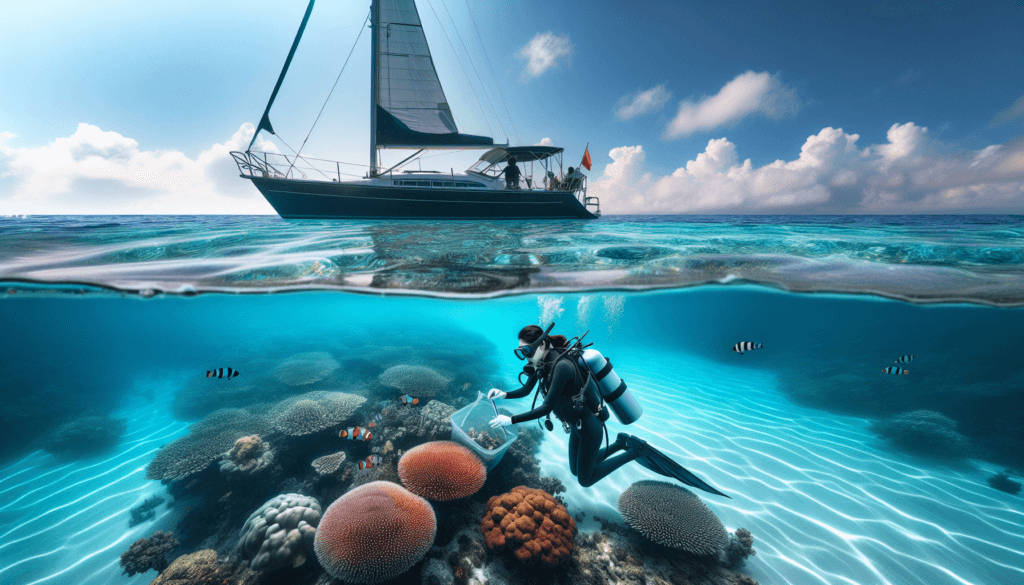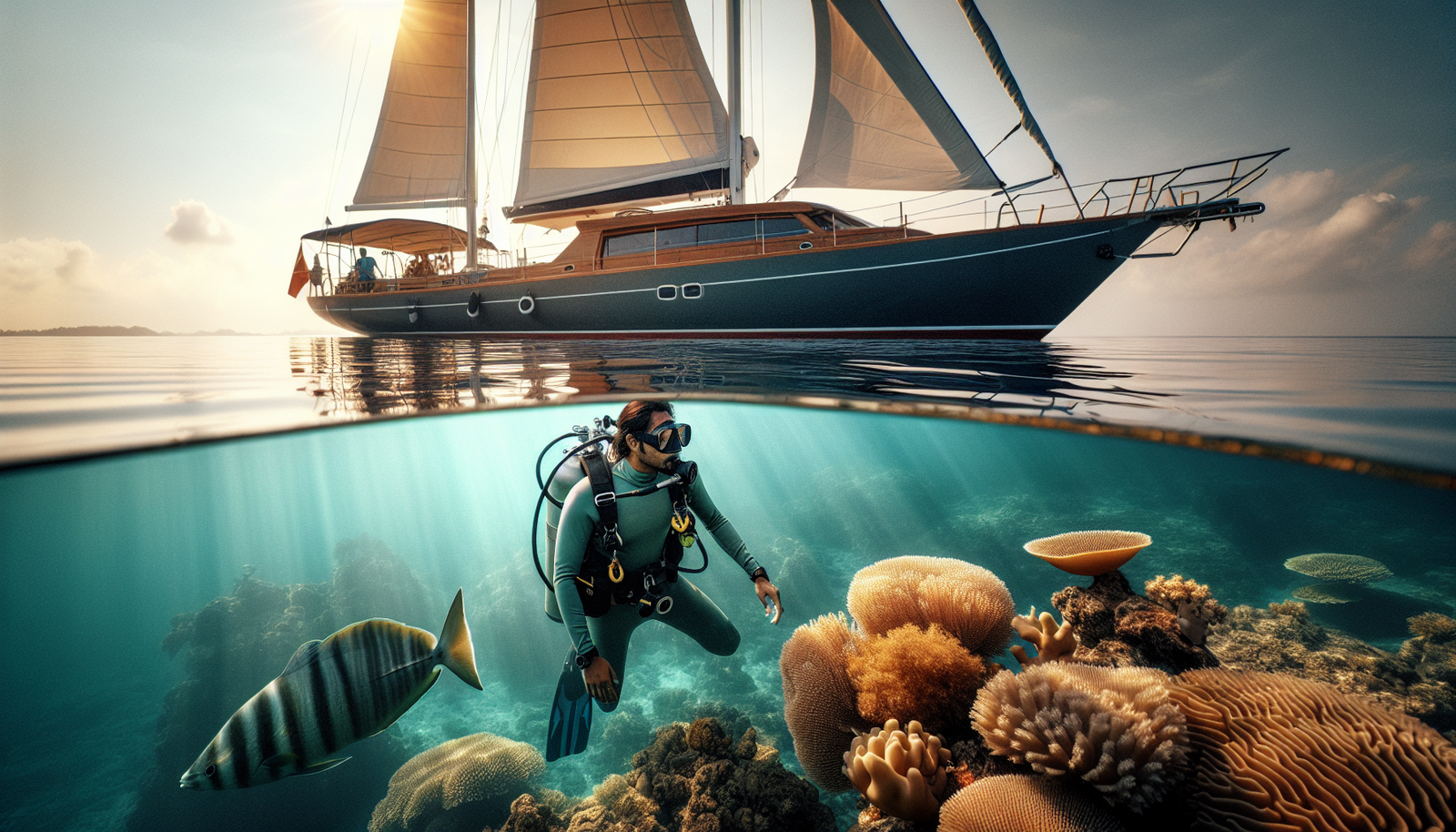National and international boating societies are broadening their horizons by partnering with marine conservation organizations. This article provides an enlightening exploration into these blossoming relationships. By leaning into shared goals and mutual benefits, it appears that marine conservation and boating might actually be a match made in heaven! You’ll explore examples of successful collaborations and learn how these alliances are impacting our oceans positively. Sail through an exciting journey of discovery as you familiarize yourself with the unique blend of marine adventure and environmental protection.

The Background of Boating and Marine Conservation Partnership
In the realm of water and marine environments, a significant partnership has emerged over recent decades – the collaboration between boating industries and marine conservation organizations. This partnership is a testament to the interconnectedness of industry, ecology, and the broad-ranging impact of human activities. Essentially, it illustrates how human indulgence in boating activities impacts marine life, and vice versa.
The Evolution of the Partnership
Born out of necessity, the partnership between boating and marine conservation was initially a rocky affair. As boating activities began to take a toll on marine biodiversity, conservationists sounded the alarm. The boating industry was initially resistant, viewing the concerns as impediments to their operations and economic growth. However, mounting evidence of environmental damage and increasing public awareness eventually prompted a shift towards collaboration.
Factors Driving the Collaboration
The key catalyst of this partnership was the growing realization of the need for sustainability. The boating industry recognized that their continued success is reliant on healthy marine ecosystems, while conservationists acknowledged the economic and social significance of boating activities. Other significant drivers include regulatory pressures, awareness campaigns, and both sectors’ wish to act responsibly for the future generations.
Key Players in the Partnership
The partnership involves a mosaic of key players from various sectors, including both private and public entities. The boating industry, composed of boat manufacturers, marinas, and tourism bodies, plays a vital role. On the flip side, a myriad of marine conservation organizations, scientific researchers, and regulatory agencies help direct the partnership towards achieving environmental sustainability goals.
The Importance of the Partnership
This strategic collision between the boating industry and marine conservation organizations is critically important for various reasons.
Promoting Environmental Sustainability
The partnership helps promote environmental sustainability since it prioritizes ecosystem health as a vital component of the boating industry’s long-term success. By adopting sustainable boating practices and regulations, marine environments can thrive, benefiting boaters and the broader community.
Enhancing Marine Biodiversity
A key target of the partnership is to enhance marine biodiversity. Boating activities can negatively impact marine life through pollution and physical disturbance. With conservation strategies integrated directly into boating operations, the industry can minimize its footprint and contribute to marine life’s preservation and proliferation.
Supporting Local Economy
The partnership also bolsters local economies. Sustainable boating operations attract eco-sensitive tourists, while a thriving, diverse marine ecosystem enhances the area’s appeal. Conversely, an environmentally conscientious boating industry helps maintain fishing stocks, benefiting local fishing communities.
Approaches in the Partnership
The partnership employs various approaches, underlining the dual goals of environmental conservation and maintaining a viable boating industry.
Joint Conservation-Policy Development
Joint conservation policy development is a key approach where industry stakeholders and conservation experts collaborate to design regulations that promote sustainability without hampering boating activities.
Coordinated Boating-Monitoring Activities
Coordinating boating-monitoring activities helps track the impact of various boating activities on local marine ecosystems. Information gathered from these activities informs policy development and offers insights for improvement.
Collaborative Educational Programs
educational programs foster awareness about the ecosystem’s delicate balance and the importance of responsible boating behaviors. Moreover, they align boating enthusiasts with conservation efforts, making them stakeholders in preserving marine health.

Major Achievements of the Partnership
The partnership has resulted in several notable achievements over the years.
Successful Policy Implementation
The effective implementation of numerous conservation-focused policies undoubtedly stands as one of the partnership’s primary successes. These policies strike a balance between allowing recreational boating activities and limiting their environmental footprint.
Notable Biodiversity Improvement
Improvements in marine biodiversity, such as the revitalization of coral reefs or the resurgence of certain marine species, speak volumes about the partnership’s impact. While natural recovery plays a part, the protective measures developed and implemented by the partnership undeniably provide safer habitats for marine life to thrive.
Increased Public Awareness
The partnership’s educational initiatives have played a crucial role in increasing public awareness about the importance of environmental sustainability. This shift in public consciousness underpins support for adopting sustainable boating practices.
Challenges in Implementing the Partnership
Despite the successes, the partnership faces several challenges in achieving its ultimate objectives.
Conflict of Interests
Conflicts of interest occasionally arise due to differing primary goals. While conservation organizations prioritize environmental preservation, the boating industry often seeks profitability. Striking a balance between these interests can at times prove challenging.
Resource Constraints
Implementing conservation policies, running educational programs, and monitoring boating impacts often require significant resources. Lack of accessibility to adequate funds can, therefore, impede the partnership’s effectiveness.
Public Opposition and Skepticism
Public opposition and skepticism also exist, often stemming from a fear that stricter regulations might stifle the boating industry’s growth or limit boating activities. Overcoming such opposition requires intensive communication and education.
Strategies in Overcoming Challenges
Yet the spirit of resilience within the partnership leads to numerous solutions for these challenges.
Negotiation and Compromise
Negotiation and compromise have proven effective in resolving conflicts of interest. Both parties need to understand the shared benefits of sustainability goals and work together to devise mutually beneficial solutions.
Resource Mobilization
Resource mobilization strategies help overcome constraints. These strategies might involve seeking funding from various sources including, but not limited to, public funds, private businesses, grants, and philanthropic donations.
Public Engagement and Consultation
Public engagement and consultation help address opposition and skepticism. Encouraging public participation in planning and decision-making processes can foster buy-in and a feeling of shared responsibility.
The Impact of the Partnership on the Boating Industry
The partnership significantly impacts the boating industry with both challenges and opportunities.
Changes in Boating Regulations
The introduction and enforcement of environmental regulations result in changes in industry operations. These might require innovative adjustments or additional investments, affecting the industry’s economics.
Increased Boating Sustainability
More positively, the increased sustainability in boating practices enhances the industry’s reputation. It attracts environmentally aware customers and differentiates the industry in an increasingly competitive market.
Growth of Eco-tourism
The combination of sustainable practices and a thriving marine ecosystem spurs eco-tourism growth. This burgeoning segment provides the industry with lucrative opportunities to expand and diversify.
The Impact of the Partnership on Marine Conservation Efforts
On the conservation front, the partnership’s impact is equally significant.
Strengthened Conservation-Policy Framework
The partnership strengthens the conservation-policy framework by integrating industry inputs. This collaboration has made the policies more comprehensive, practical and hence effective in preserving and enhancing marine life.
Improved Marine-Life Protection
The partnership directly contributes to improved marine-life protection. Less pollution and disturbance from boating activities offer marine life much-needed respite to recover and flourish.
Enhanced Community Participation in Conservation
The partnership also promotes active community participation in marine conservation. By realizing the interdependence of their leisure activities and the health of marine ecosystems, local communities become more invested in conservation efforts.
The Future of the Partnership
As we gaze into the future, the partnership between boating and marine conservation is set to evolve further.
Potential Trends and Developments
Anticipated trends and developments include more significant integration of technology in monitoring and regulating boating activities. We may also see the adoption of more stringent policies in response to urgent climate change issues.
Potential Challenges and Opportunities
Rapid climate change and the unpredictability it brings is a significant challenge. However, it could also serve as a compelling reason to double-down on conservation efforts and enforce strict sustainability practices, leading to potential opportunities.
Recommendations for Strengthening the Partnership
Strengthening this partnership will require continuous engagement between all stakeholders. Regular evaluations and feedback loops should be implemented to track the effectiveness of initiatives and policies.
Case Studies
To illustrate the impact of the partnership, let’s look at three distinct case studies from different geographical regions.
Case Study 1: Successful Partnership in the Pacific Northwest
The Pacific Northwest provides a shining example of successful collaboration. Through dedicated joint efforts, the partnership has helped rejuvenate salmon populations, once threatened by boating and other human activities, and in doing so also secured the vibrant future of the boating industry.
Case Study 2: Lessons from the Caribbean
The Caribbean region serves as a learning ground. Past failures due to lack of communication and negotiation have highlighted the importance of a balanced approach, involved parties have since improved their cooperation and dialogue channels, and the joint efforts now lead to more impressive results.
Case Study 3: Innovation in the Mediterranean Sea
Innovation in the Mediterranean region showcases how technologies are leveraged for environmental monitoring and enforcement of boating regulations. These efforts have significantly reduced boating’s impact and enriched the marine biodiversity in the area.
In conclusion, the partnership between boating and marine conservation organizations represents a model for sustainable coexistence. It encapsulates the vision of a world where economic growth and nature conservation go hand-in-hand. Through this partnership, everyone can enjoy their boating activities while also ensuring the preservation of our precious marine environments.

